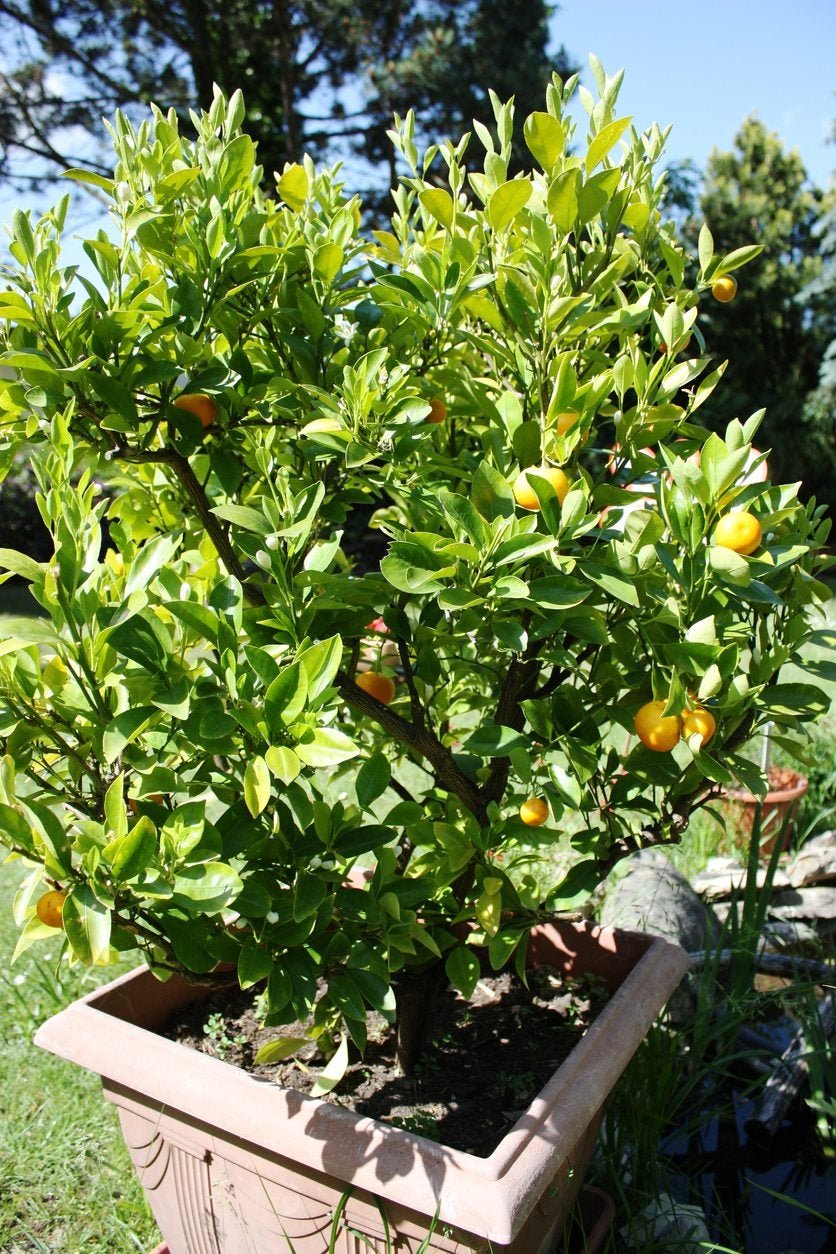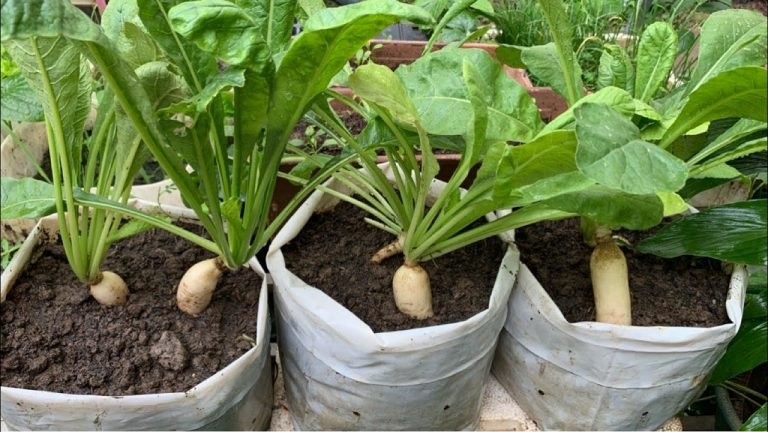how to grow kumquat in a pot – [Beginners Guide]
Are you looking for a new gardening challenge that’s both fun and rewarding? Consider growing kumquats in a pot! This citrus fruit is a great addition to any garden or kitchen, and it’s surprisingly easy to grow in a container.
As someone who loves growing their own produce, I’ve experimented with a variety of fruits and vegetables in pots. Kumquats have quickly become one of my favorites, thanks to their hardiness and versatility.
One of the best things about growing kumquats in pots is the convenience it offers. You don’t need a large yard or garden space to enjoy fresh, homegrown fruit. Plus, growing in pots allows for greater control over soil quality, watering, and fertilization, resulting in healthier plants and better-tasting fruit.
In this guide, we’ll cover everything you need to know about growing kumquats in a pot. From selecting the right variety and container to proper care and maintenance, we’ll provide you with all the tips and tricks you need to succeed.
So, whether you’re an experienced gardener or just starting out, growing kumquats in a pot is a fun and rewarding way to bring fresh citrus flavor to your home. Let’s dive in and get started!
Pot or container selection
If you’re planning to grow kumquats in a pot, choosing the right container is crucial for the success of your plants. Here’s what you need to consider:
Size and Capacity
Kumquats need ample space to grow, so it’s important to choose a pot that’s large enough to accommodate their roots. As a general rule, you should aim for a pot that is at least 14 inches (35 cm) in diameter and 16 inches (40 cm) deep. This will provide enough room for the plant to grow and thrive.
It’s also essential to choose a pot that has enough capacity to hold soil and water. A pot that’s too small will dry out quickly and can lead to root-bound plants. On the other hand, a pot that’s too large may hold too much water, causing the roots to rot.
Construction
The construction of your pot is just as important as its size. Here are some things to consider:
Material: Choose a pot made of a durable material such as plastic, fiberglass, or glazed ceramic. Unglazed terra cotta pots are also a good option, but they tend to dry out quickly and require more frequent watering. Avoid using metal or wood pots, as they can corrode or rot over time.
Drainage: Make sure your pot has drainage holes at the bottom to allow excess water to drain out. Without proper drainage, the soil can become waterlogged, leading to root rot and other issues. If your pot doesn’t have drainage holes, drill a few yourself or place a layer of rocks or gravel at the bottom of the pot.
Style: You can choose a pot with a decorative design or a more utilitarian style, depending on your preference. Just make sure the pot is functional and well-suited for growing kumquats.
By choosing the right size and construction for your pot, you can give your kumquats the best chance at success. With proper care and attention, you’ll be enjoying fresh kumquats in no time!
Make suitable soil mix
When it comes to growing kumquats in pots, soil selection is just as important as pot selection. Kumquats require well-draining soil that is rich in nutrients to grow and thrive. Here’s what you should know about selecting the right soil mix for your kumquat plant:
Type of Soil
Kumquats thrive in a well-draining, slightly acidic soil mix. A good soil mix for kumquats should be composed of a blend of peat moss, perlite or vermiculite, and compost. Avoid using garden soil or topsoil, as they are often too heavy and may not provide adequate drainage.
Mixture of Soil
To give your kumquat plant an extra boost, you can consider adding some amendments to your soil mix. These include:
- Compost: Adding compost to your soil mix can help improve its structure, drainage, and nutrient content.
- Organic Fertilizers: You can use organic fertilizers, such as fish emulsion or kelp meal, to provide additional nutrients for your plant. These fertilizers are typically slower-release and less likely to burn your plant’s roots.
- pH adjusters: Kumquats prefer a slightly acidic soil pH (between 5.5 and 6.5). You can use sulfur or aluminum sulfate to lower the pH of your soil, or lime to raise it.
Remember, the key to a healthy kumquat plant is good soil mix that is well-draining and rich in nutrients. Choosing the right soil mix and amendments will go a long way in ensuring the success of your kumquat plant in a pot.
How to plant the kumquat?
Planting kumquats in a pot at home can be a great way to grow fresh citrus fruit. Here’s a step-by-step guide to help you get started:
Step 1: Choose the right pot
Select a pot that is large enough to accommodate the root system of your kumquat tree. A pot with a diameter of at least 12 inches and a depth of at least 12 inches is a good size for most kumquat varieties.
Make sure the pot has drainage holes to allow excess water to drain away from the roots. If the pot doesn’t have drainage holes, be sure to add some to the bottom before planting.
Step 2: Fill the pot with soil
Fill the pot with a well-draining potting mix that is suitable for citrus trees. Kumquats prefer soil with a pH between 5.5 and 6.5, so you may want to amend your potting mix with some peat moss or compost to adjust the pH as needed.
Make sure to leave enough space at the top of the pot for watering and for adding a stake or trellis if needed.
Step 3: Plant the kumquat tree
Remove the kumquat tree from its container, taking care to gently loosen the roots. Place the tree in the center of the pot, making sure that the root ball is level with the soil surface.
Fill in around the root ball with soil, gently tamping it down to remove any air pockets. Water the tree well to help settle the soil around the roots.
Step 4: Support the tree
Kumquat trees generally do not require support, but if your tree is tall or if it produces heavy fruit, you may want to consider adding a stake or trellis to the pot to help support the tree.
Be sure to place the stake or trellis in the pot before the tree grows too large, as it can be difficult to add one later without damaging the roots.
Step 5: Water and fertilize
Kumquats prefer moist, well-draining soil. Water the soil deeply when the top inch feels dry to the touch, but be careful not to overwater as this can cause root rot.
You can fertilize your kumquat tree with a citrus-specific fertilizer every 6-8 weeks during the growing season (spring and summer), following the instructions on the fertilizer package for the recommended amount and frequency.
With proper care and attention, your kumquat tree will produce an abundance of delicious, tangy fruit that you can enjoy throughout the year.
How to care for kumquat?
Watering Requirement
Kumquats prefer evenly moist soil but can’t tolerate waterlogged soil. Water the plant deeply when the top 1-2 inches of soil are dry. The frequency of watering depends on the temperature and humidity of the environment. In general, kumquats may need to be watered every 1-2 weeks during the growing season and less often during the winter. Avoid getting water on the leaves and fruit, as this can increase the risk of fungal diseases.
Fertilizer Requirement
Kumquats benefit from regular fertilization, especially during the growing season. Use a slow-release fertilizer formulated for citrus trees, following the package instructions. Alternatively, you can use organic fertilizers such as compost, fish emulsion, or seaweed extract. Fertilize the plant once a month from March to August, then reduce to every two months until November.
Sunlight Needs
Kumquats need plenty of sunlight to produce fruit. Choose a spot in your home that gets at least 6 hours of direct sunlight per day. If you don’t have a sunny spot indoors, you can supplement natural light with artificial light using a grow light.
Pruning & Training
Kumquats generally do not need extensive pruning, but they can be lightly pruned in late winter or early spring to maintain their shape and remove any dead or damaged wood. Pinch back the tips of young shoots to encourage bushy growth. If your kumquat is getting too big for its pot, you can repot it into a larger container or prune the roots to maintain its size.
Other Care
In addition to watering, fertilizing, and pruning, there are a few other things you can do to care for your kumquat:
- Keep the soil well-drained and avoid overwatering.
- Monitor for pests such as spider mites, scale, and aphids. If you notice any pests, treat the plant with an insecticidal soap or horticultural oil.
- Keep the plant away from cold drafts or extreme temperature changes.
- Consider providing additional humidity by placing a tray of water near the plant or using a humidifier.
- Harvest the fruit when it turns orange and is slightly soft to the touch. Store in the refrigerator for up to two weeks.
Common problems
Pests
Kumquat trees grown in pots may also be susceptible to pest problems, such as aphids, spider mites, and scale insects. These pests can weaken the plant and cause stunted growth, leaf drop, and fruit damage. To prevent pest problems, it’s important to inspect your kumquat tree regularly and take action at the first sign of infestation. You can use natural methods such as spraying the plant with a mixture of water and dish soap or introducing beneficial insects such as ladybugs.
Diseases
Kumquat trees grown in pots may also be vulnerable to fungal diseases such as root rot, powdery mildew, and citrus canker. These diseases can cause leaf yellowing, wilting, and fruit drop. To prevent disease problems, it’s important to practice good hygiene by removing fallen leaves and fruit, providing good air circulation, and avoiding overwatering. Using disease-resistant varieties of kumquat can also help.
Soil and Nutrient Issues
Kumquat trees grown in pots may also experience issues with soil and nutrient imbalances. Over time, the soil can become depleted of nutrients, which can lead to stunted growth and poor fruit production. It’s important to use a well-draining potting mix and fertilize your kumquat tree regularly with a balanced fertilizer according to the package instructions. Avoid over-fertilizing, as this can lead to excessive foliage growth at the expense of fruit production.
Root Bound
Kumquat trees grown in pots can become root bound over time, which can limit their growth and fruit production. To prevent this problem, it’s important to choose a pot that is large enough for the tree’s root system and to repot the tree every two to three years. You can also prune the roots before repotting to encourage healthy growth.
Environmental Factors
Kumquat trees grown in pots may also be affected by environmental factors such as temperature and humidity. These trees prefer warm temperatures and high humidity, so it’s important to provide them with a warm, humid environment. If you live in a dry or cool climate, consider using a humidifier or placing a tray of water near the tree to increase humidity levels. Additionally, protect your kumquat tree from cold temperatures by moving it indoors or covering it with a frost cloth during cold weather.
Harvesting & storing homegrown kumquat
When it comes to harvesting kumquats, timing is also important. Kumquats are typically ready to harvest in the winter months, from December through March, depending on your location. The fruit should be fully colored and have a slightly soft texture. If the fruit is still hard and unripe, it should be left on the tree for a bit longer.
To harvest kumquats, gently twist or clip the fruit off the tree, being careful not to damage the stem or the tree. Once harvested, kumquats should be stored in a cool, dry place away from direct sunlight. They can be stored at room temperature for up to a week, or in the refrigerator for up to two weeks.
If you have a large harvest and need to store some kumquats for later, you can freeze them. To do this, wash and dry the fruit, then slice it into thin rounds. Place the sliced kumquats on a baking sheet and freeze them until solid. Transfer the frozen kumquats to a resealable bag and store them in the freezer for up to six months.
Overall, harvesting and storing kumquats is a fairly simple process. With proper care and storage, you can enjoy the delicious, tangy flavor of homegrown kumquats all year round.
Growing kumquat in container – Conclusion
Congratulations on completing this guide on growing kumquat in a pot! By now, you should have gained valuable knowledge on how to grow kumquat successfully in a pot, from choosing the right pot and soil mix, planting and caring for the plant, to identifying and addressing common issues.
Growing kumquat at home can be a fun and satisfying experience, allowing you to enjoy fresh and flavorful fruits right from your own home. Even if you have limited space, growing kumquat in a pot is still possible, making it a great option for all types of gardeners.
So why not give it a try? With the information provided in this guide, you have everything you need to start growing kumquat in a pot. By implementing the tips and techniques discussed, you’ll be on your way to growing healthy and delicious kumquat that you can enjoy in a variety of ways.
So what are you waiting for? Get started today and enjoy the benefits of growing your own kumquat at home!







